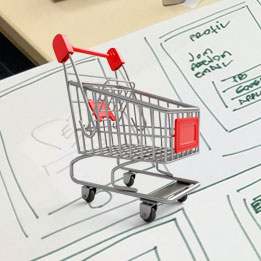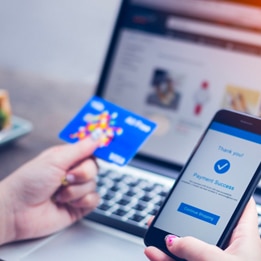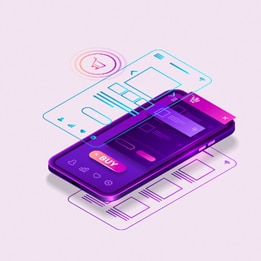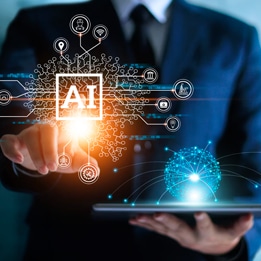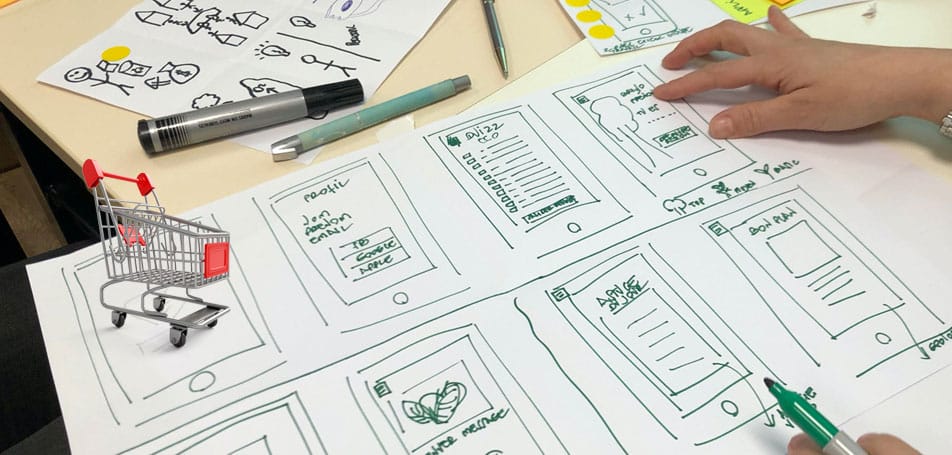
It doesn’t matter how many complex algorithms or advanced features your online store includes if people can’t figure out how to complete a purchase or spend too much time doing so.
That’s why user experience is just as important as user interface design. That’s also why eCommerce businesses are willing to hire and pay their UI/UX designers.
In this article, we’ve collected the most relevant UX design trends for 2021. We’ll discuss how they improve user experience and show a few successful examples of great eCommerce designs.
#1. Inclusive Design
Today’s UX design must be inclusive and customized to meet the needs of any user group. After all, inclusive design benefits all people, whether they have specific needs or not.
If your website transcripts video or audio content, it’ll serve people who have difficulties with hearing—and other people who forgot their headphones or don’t have time for watching the full video.
A very popular issue is vision problems that come with age and slow older people down. But that can be compensated for with larger font sizes and increasing contrast on a website.
You can also add a feature that adjusts font sizes up or down depending on your users’ needs. The same goes for icons and other visual elements.
Inclusive design not only makes UX design more accessible but opens the door to new users, markets, and margins. Plus, it brings the much-desired side effect of innovation.
#2. Multi-Platform Interactions
Mobile is today’s king. Mobile devices accounted for 48% of web page views worldwide, and this number is only growing.
But mobile devices aren’t alone. We got used to quite a few devices with different screen sizes like voice-based interfaces, consoles, automobile dashboards, wearables, and tablets.
For users, it doesn’t matter where they buy stuff—on mobile devices, Apple Watch, or smart fridge. They only want to do it fast using the handiest device.
That’s why multichannel UX is the next trend for 2021. Omnichannel UX allows for creating a design that works on multiple devices. For example, users start requesting Uber with Amazon Echo speakers and end it with their smartphones.
#3. AI-Powered Chatbots
Chatbots are quite a popular form of communication for many businesses, including retail.
A chatbot is a program that simulates human conversation, verbally or in writing. It can be quite simple, like rule-based bots. They answer FAQs, notify customers about current discounts, and do other simple tasks.
Bots are handy; that’s why many retail companies choose to build a chatbot for their website.
More complex AI-powered chatbots help visitors with shopping, making the process easier for people who are already motivated to purchase. They answer questions, show relevant offers and discounts, and make customer interactions look natural—just like taking to a shopping assistant.
For example, Sephora’s chatbot asks customers to take a brief quiz before they continue looking through items. Based on the answers people give, the bot says which products are best for them—and offers to upload a photo to see how these products will look on them.
#4. Designing for Speed
Today’s users expect speed. From a few minutes for Uber arrivals and same-day Amazon deliveries to instant upload times of huge images on websites.
The same goes for interacting with an eCommerce website: people want to make orders fast and find information quickly, and that doesn’t always depend on website speed—but rather the speed of user interactions.
Here are a few tips on how to achieve it:
- Use slightly bigger buttons, enlarge the clickable area to max possible
- Find the balance between grouping elements by type and by usage
- Use gestures that involve more difficult movements for actions that lead to severe consequences (relevant on mobile devices)
- Optimize website texts for scanning—use suitable layout and by formatting content
The Google Store is an excellent example of such a website. It both loads in just over a second, and its UX design is efficient, too. Google knows if you’re a new user or a returning one, so they don’t bother asking if you want to register or continue as a guest each time.
Google helps its buyers get what they want without waiting, making it easier to checkout. This is especially important for eCommerce, where every extra second makes users more likely to leave.
#5. Continuous User Experience
The worst thing you can see in 2021 is interruptions.
For example, you want to take a closer look at some pictures on a website. But to do that, you need to go to the other page and let the image load in a popped out window.
Buying a laptop and want to check its characteristics? Click the characteristics section and wait until it loads. The more, the merrier.
The longer users have to wait and the more actions they need to make, the less satisfied they are with your website. The very purpose of a continuous design is to prevent such situations from happening.
Let’s say you want to buy a laptop and find the one you like. You check the ‘characteristics’ section, reviews section, then probably customize the model or change its color.
User reviews appear precisely where characteristics were just a moment ago. There are no tabs, no pop-up windows. All the changes happen instantly, on the same page. You’re staying focused on the laptop you like.
UI/UX designers need to be creative and work with innovations, keeping up with the latest trends. Retail businesses will have to remain focused on creating well-thought-out products, getting higher ROI, and stay competitive.
Some trends like inclusive design have been widely discussed but haven’t yet been put into practice. 2021 will change that, hopefully.

